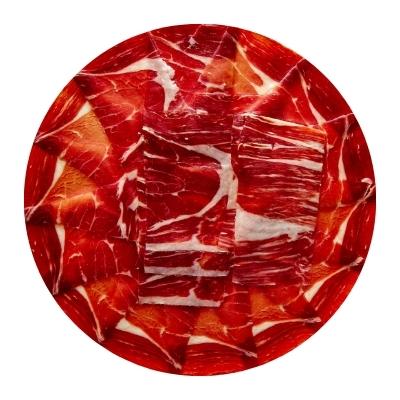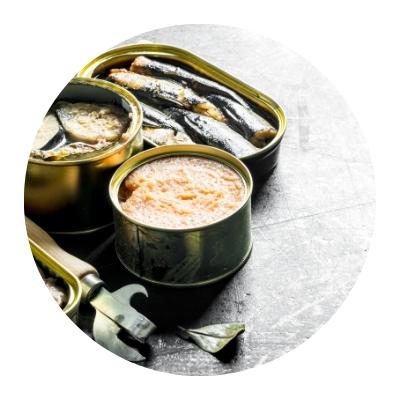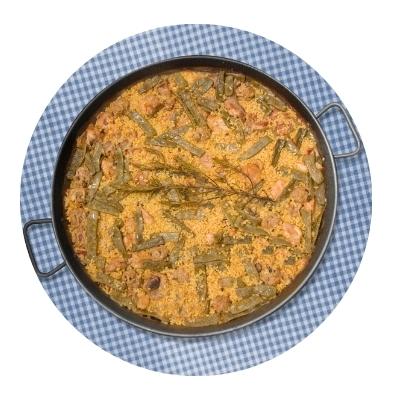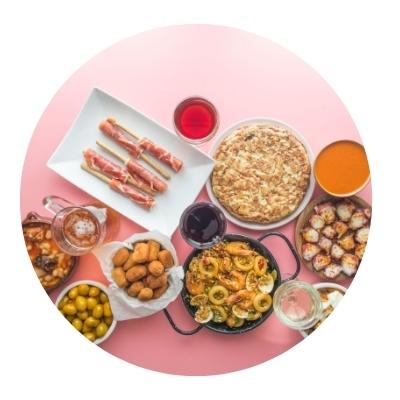Getting to know Ostatu (Family winery in the Rioja Alavesa)
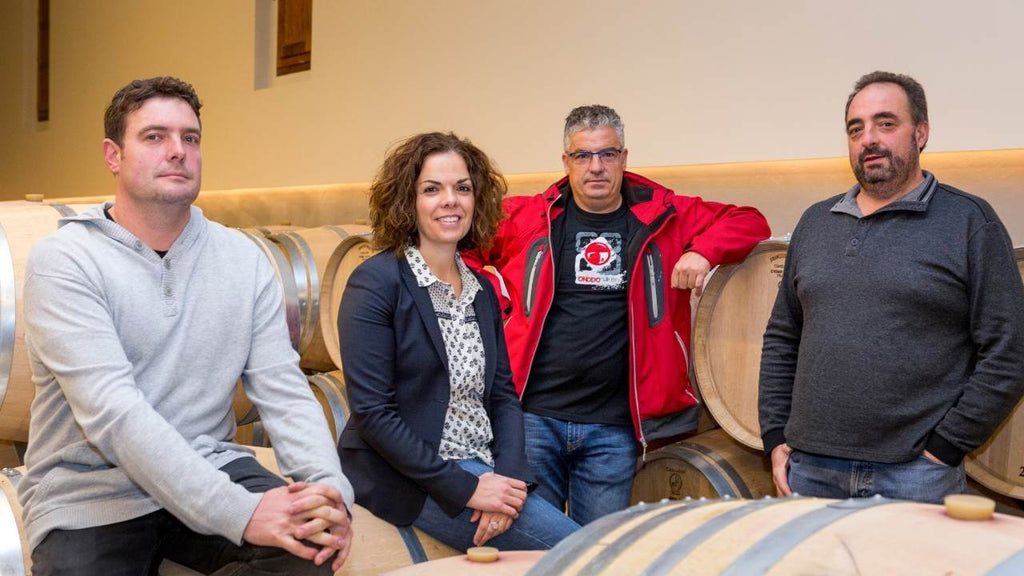
Finally, Jan had the opportunity to travel to the Rioja Alavesa, known as "the pretty girl of La Rioja". An area of excellent wines, where he was welcomed by Mariasun Sáenz de Samaniego Berganzo, the director of the family winery Ostatu, famous for its "Singulares" and "Sensatos" wines, highly appreciated by Colono's customers. We talked about the organic production of extraordinary "terroir" wines, the family's century-old winemaking tradition and the current challenges they face in this unique enclave in the south of the Basque Country, such as climate change. "At Ostatu, we like to say that wine is made in the vineyard, not in the winery, we want to give the main role to the grape and our vineyards", explains Mariasun Sáenz de Samaniego Berganzo in the exclusive interview with our gastronomic blogger.
Question: You grew up with wine and now you run the family winery Ostatu with your brothers Gonzalo and Íñigo. Was it always clear to you that you were going to dedicate your life to wine and the family business? Or were there phases in your life when you felt attracted to other professions?
Answer: Yes, we have all grown up among vineyards and wines, in which we have had to collaborate and help the family, and although at the beginning I developed my professional life in another very different sector, the banking sector, after finishing my university studies. While working there, it became increasingly clear to me the opportunities we had to develop and improve the family business, so I left my job and came to work at Ostatu, a decision I took 20 years ago, and which I am very satisfied with.
Question: The Rioja wine region is made up of several sub-regions, the "Rioja Alta", the "Baja" and the Basque "Alavesa". How would you describe the differences and strengths of the "Alavesa"?
Answer: Rioja is the oldest designation of origin in Spain, with more than 60,000 hectares of vineyards in production. Rioja Alavesa, the Basque part of the appellation, accounts for less than 30% of the vineyard surface area, but it is a very important driving force in the commercialisation of wine within the appellation, with a historical connotation more closely linked to family production and where vineyard ownership has remained in the hands of winegrowers, rather than cooperatives or trading companies, more characteristic of Rioja Alta and Rioja Baja, nowadays known as Rioja Oriental. The climatology, the result of the influence of the Atlantic and Mediterranean climates, the structure of the mostly calcareous clayey soils and low pH levels, an irregular orography that draws an infinity of small plots with different orientations and locations, the imposing gaze of the Sierra de Cantabria-Toloño mountain range, and the historical remains that speak of the winemaking process, historical remains that tell us about the production of wine since time immemorial, its medieval villages, together with the character and roots of the people who work in the area, make Rioja Alavesa a small but very important wine-growing region in Spain, and "the pretty girl of Rioja".
Question: The effects of climate change on the Riojas, and especially on the "Alavesa", are of great interest to me - and to our readers -. But also, the history of Bodega Ostatu, which dates back to the 16th century in the region. From a country inn with direct wine sales, through the sale of the estates during the Spanish Civil War (1936-39), to the repurchase and the new start with a focus on top quality in the 1980s ...
Answer: If climate change is a reality in our area, today we have vineyards planted at an altitude of 800 metres, unthinkable just 50 years ago. We are increasingly considering native grape varieties with longer ripening cycles: Mazuelo, Craciano, Garnacha, with greater acidity and herbal character to the wines, especially for long ageing. And if the history of the winery goes back to the 16th century, there is evidence that the family was established in Samaniego, our village, and some documents already tell us about vineyards and wine production. As in all cases, the Civil War brought complicated times for my father's family, who sold the house where we have the winery today, and which my father was able to buy back in the early 1980s, renovating it and starting to build the winery where we work today, and which we have been extending and improving in successive stages. After the incorporation of my brothers in the 90s, with training in viticulture and oenology, an important development of new wines began and a very important bet for a viticulture oriented to low productions, looking for good ripening and health, and transferring the particular character of each vineyard to our wines.
Question: Who are your current customers, to what extent are gastronomy and the hotel and catering industry a pillar of the business, and what is the relationship between the domestic and export markets?
Answer: Our sales are mainly centred in the north of Spain, which is closely linked to gastronomy, and we export 40% of our production practically all over the world, with Europe and the USA being our main markets, with good prospects for development and growth. The current world situation will affect our sales, but we are optimistic and hope that the global political and economic situation will soon be resolved.
Question: How many people does Ostatu employ in total, from the family and in general, as permanent and additional employees, for example for the grape harvest?
Answer: We are a family business, made up of three brothers, and a young and stable team of six other people, for the different areas of the winery, from wine tourism to production. Gonzalo and Iñigo, both oenologists, oversee the technical management of viticulture and winery work, and I am in charge of sales and administration, although we interact in the different areas. In times of work in the vineyard, such as green pruning and mainly the grape harvest, we need the support of seasonal workers who help us with the grape harvest.
Question: As you mentioned before, there are already wines with 16 and more percent by volume in La Rioja Alavesa. I am a big fan of strong, even heavy reds, like those from Priorat or Calatayud, where mainly stone-aged Garnacha vines are grown. Does Ostatu have those wines?
Answer: No, we do not produce such alcoholic wines. Our wines reach, maximum 14.5 percent by volume, occasionally 15 percent, but it is a clear indicator that something is changing climatically, and that is constantly and year after year, hence the importance of new vineyards at altitude and varieties that have always been grown in La Rioja such as graciano, mazuelo, with a very interesting contribution of acidity and freshness.
Question: How was the harvest of the 2021 campaign, the most recent one? From what I have read and also heard from La Rioja; it is supposed to be an excellent vintage. It is not one of the best in history, but it is one of the most outstanding?
Answer: For us at Ostatu, it is a very good to excellent vintage for the moment. The weather conditions were very favourable, with a good level of rain during the Autumn and Winter, dry spring and summers for the development of the vineyard with perfect health, followed by cold temperatures during the last stage of ripening, made last year 2021, a great vintage with very balanced ripening and a perfect health of the grapes, which has resulted in vigorous, fresh wines, with very good fruit and very good levels of acidity, in short, all the components for a wine with a great ageing capacity.
Question: To what extent have you been able to convert part of Ostatu's production into organic and ecological wines?
Answer: As of 2021, all our grape production from our own vineyards is certified organic, and our most important vine growers, with whom we collaborate will also be certified organic soon, are in the transition process, so we will gradually certify all our wines as well. Currently, we already have several Eco wines on the market, such as Valdepedro, Escobal and our Rosé. The conversion process has not been complicated, because for many years, my father eliminated all mineral fertilisers, pesticides, and treatments, always practising an intelligent and respectful viticulture, as the only way to obtain wines with personality and character.
Question: To what extent does the war in Ukraine affect Ostatu, with sales markets in Russia, but also in Ukraine, the Baltic countries and Poland?
Answer: Although it does not affect us directly, as these countries, apart from Poland, are not priority markets, I do believe that it will affect us significantly. Rising fuel prices, disruption in the supply chain, generalised price rises, and global uncertainty are major problems that are going to affect wine consumption at home and in the on-trade, and we are going to feel it in the short term.
Question: In addition, in Ostatu you are also carrying out a project that aims to provide a habitat for insects and other animals, rodents, birds, among others, from the vineyards instead of monoculture vineyards by planting useful plants...
Answer: We have an ambitious and important R&D&I project "Viñadiverdidad" for us. It is about increasing biodiversity, the diversity of animal and plant species, specific to each vineyard, as well as the correct management and balance of the soils, so that, with a good organic composition, we can turn them into Co2 "sinks", mitigating climate change. We are planting different types of vegetation around the vineyards to contribute to this greater biodiversity, which is also very favourable for the natural control of the different conditions that the vineyard may have. We are working towards a "regenerative" viticulture, going beyond the concept of organic viticulture, which does not consider CO2 emissions or other factors that have a significant impact on global warming, we are moving towards this search for balance with nature, which gives us the possibility of producing great wines.
Question: And it works, I know winegrowers in Alentejo in Portugal who provide a home for birds of prey, for example, and therefore hunting grounds for rodents, but also smaller birds and insects hungry for grapes, or a winegrower near Ronda, near Malaga, in Andalusia, who lets his vines grow around natural hedges, which attracts an abundance of beneficial insects that decimate pests on the vines and leaves. This creates local ecosystems rather than monocultures. As we have here in Andalusia with olive monocultures, but where a change is slowly beginning to take place.
Answer: Vegetation next to vines or olive trees also has its benefits. In nature, everything is connected, and everything has its place. Human intervention in many cases has broken this connection and balance, but respectful and intelligent work helps us to maintain the quality of our wine-growing landscape and to promote and improve biodiversity. We cannot forget that the Rioja Alavesa wine-growing landscape was declared an asset of cultural interest in 2013, and a candidate for Unesco World Heritage Site for our "wine and vineyard landscape", which is still under evaluation.
Question: What grape varieties do you use to create your wines at Ostatu? Tempranillo and Garnacha are indispensable components of a Rioja wine, but do you have any special or very local varieties for your wines, including the whites?
Answer: Rioja Alavesa is mainly known for its red wines, but there is a more limited and very interesting production of white wines. For our whites, we work mainly with Viura and Malvasía, and we have a new plantation of Garnacha blanca at an altitude of 800m, with which we will make a new wine in the future, with which we are already carrying out some ageing tests in wood and concrete. Viura and Malvasía are two very interesting varieties to produce together, as on the one hand we have the acidity, freshness and citric character of the Viura, and the Malvasía which gives us a little more unctuousness and aromas of ripe fruit and sweet tones that contrast with the freshness and acidity of the Viura. White wines, in general, suitable for young consumption, and with a great ageing potential. In the case of red wines, based fundamentally on the fruity, ripe, complex, and deep character of the Tempranillo grape, we have other very interesting varieties, such as Mazuelo, Garnacha and Graciano, very much used in small percentages for wines with long ageing, for their contribution of acidity and freshness that complements the fruity and complex character of Tempranillo.
Question: But you also have much older vines?
Answer: Yes, the area in which we are located is characterised by being the area of Rioja with the oldest vineyards in the whole designation of origin, we have many plots that would be a good example of this traditional vineyard cultivation in Rioja, but I would especially highlight "Revillas" a plot planted in 1923, It is a wine that is the expression of a very old tempranillo, with great concentration, depth, elegance and at the same time a surprising freshness and acidity, with a great potential for ageing and cellaring.
Question: Recently there was also a dispute in the Basque province of Álava about the separation of the D.O. regions, Rioja Alavesa and Viñedos de Álava. How do you see this demarcation?
Answer: The D.O. Rioja region has 65,000 hectares of vineyards, only 13,000 of which are in Rioja Alavesa. Of the more than 600 wineries, almost half are in the Alavese part, which is an important factor to consider in this claim. The dispute has been taken to political terms, but the important thing is what the sector and the winegrowers of Rioja Alavesa think, with a differentiated character in terms of vineyard structure, soils, production costs and of course the quality level of many of its wines, compared to the large volume of production in Rioja, This is not fair for the small winery, for the small winegrower who is seeing how his work is not adequately valued within the appellation, so he is looking for new alternatives to the identification and characterisation of his wines. Personally, I think the appellation needs to change, to be more demanding in terms of quality, and any way of making demands seems legitimate to me, when the aim is to improve the lives of winegrowers and families who live in rural areas, maintaining the landscape and making high quality wines.
Question: How would you describe your two "lines" of wines, the "Sensatos" and the "Singulares"?
Answer: We have two lines of wines, the "Sensatos", which represent the tradition in the production of young wines, but also Crianza, Reserva and Gran Reserva, making different plots and let's say being "coupage" wines very identified with the general characteristics of Rioja Alavesa, and on the other hand our singular wines, which are "unique", and the very essence of our work, "one plot, one wine", each one with different characteristics depending on the vineyard from which they come. At Ostatu, we like to say that the wine is made in the vineyard, not in the winery, we want to give the main role to the grape and our vineyards.
Question: Do you also offer visits to wineries and accommodation for the growing field of "wine tourism"?
Answer: Of course, we offer visits and tastings of our wines, as well as our oil, as we also have a small production of extra virgin olive oil, and we accompany it with a good sample of the local gastronomy. We are currently developing a new rural accommodation project, which we will complete this year, offering our customers and visitors the possibility of staying in our winery, with spectacular views of the Sierra de Cantabria-Toloño, and surrounded by vineyards.
The wine report of the Master of Wine Tim Atkin, Rioja 2022, who toured the Riojas for three weeks and also visits Ostatu every year, has just been published.
Biography:
Mariasun Sáenz de Samaniego Berganzo (47) is the director of the family winery Ostatu. She lives in Samaniego, where the winery and vineyards are located, in a rural environment, where she was born and raised. She has a degree in Economics from the University of the Basque Country. Since she joined the winery in 2002, she has undergone an intense plan of continuous training, mainly in areas related to viticulture, winemaking, and marketing. Her partner also works in the wine sector, and together they have two children whom they try to involve in wine culture from a very young age, "but without trying to condition their future education", as she says. She and her partner "want them to study what they like and seek their own path". In her free time, "which is not much", she likes to travel, enjoy nature, gastronomy and wine with family and friends.
SHARE:
